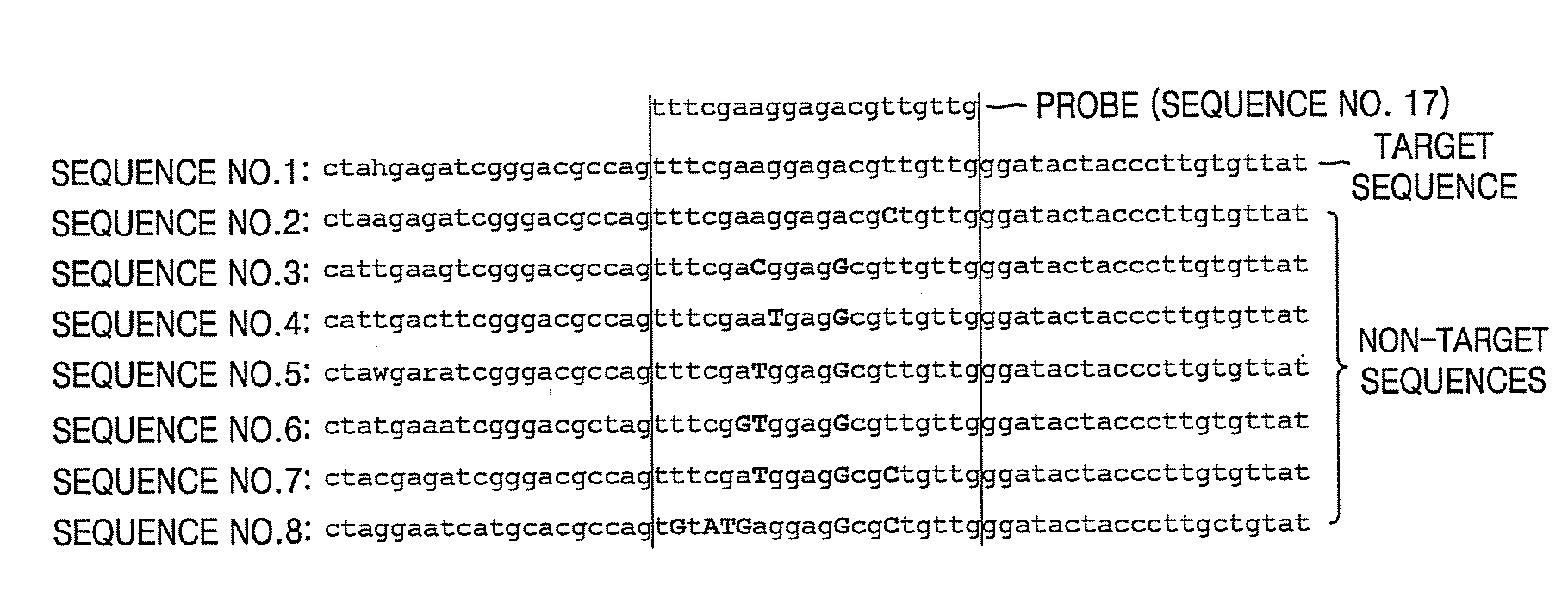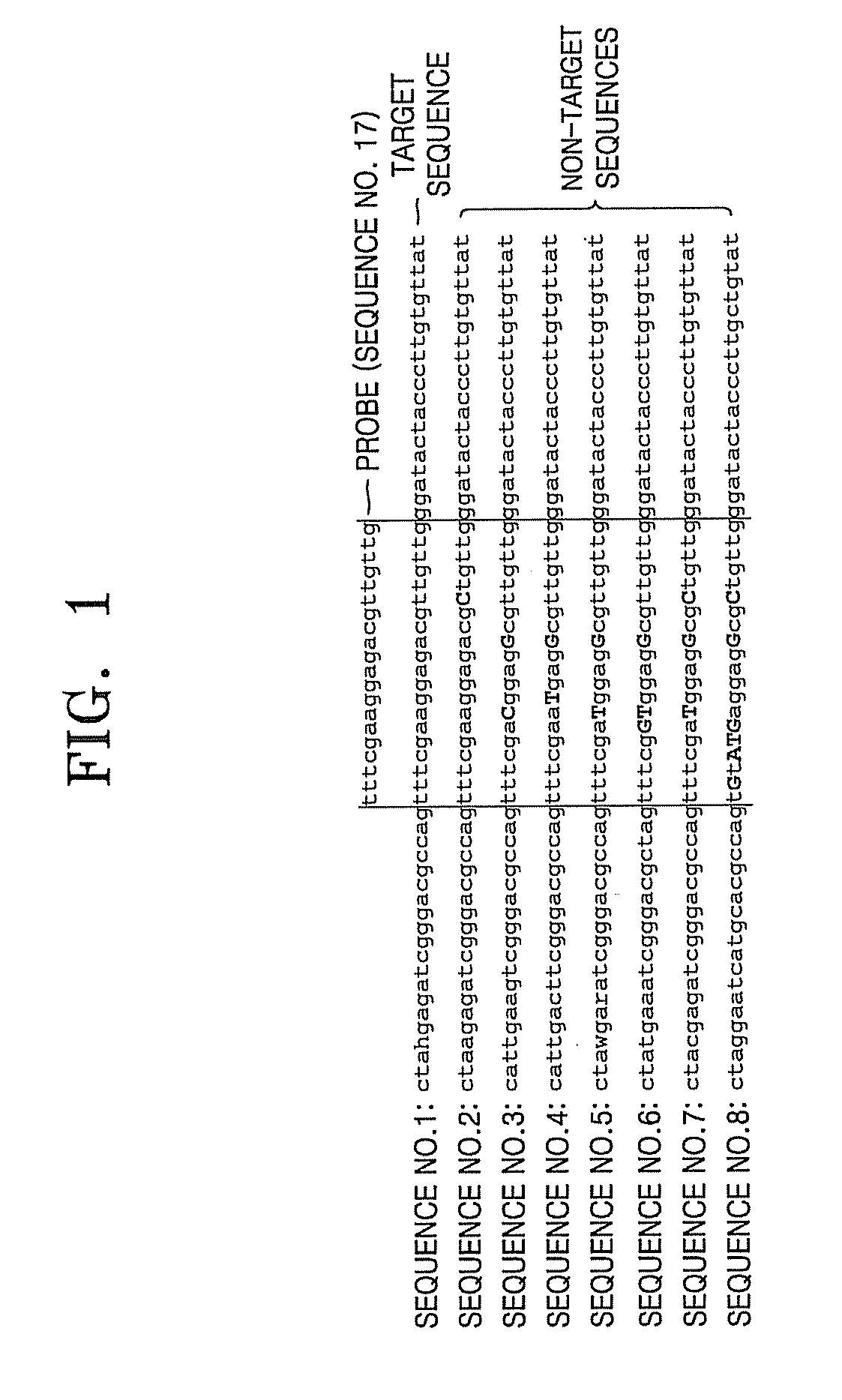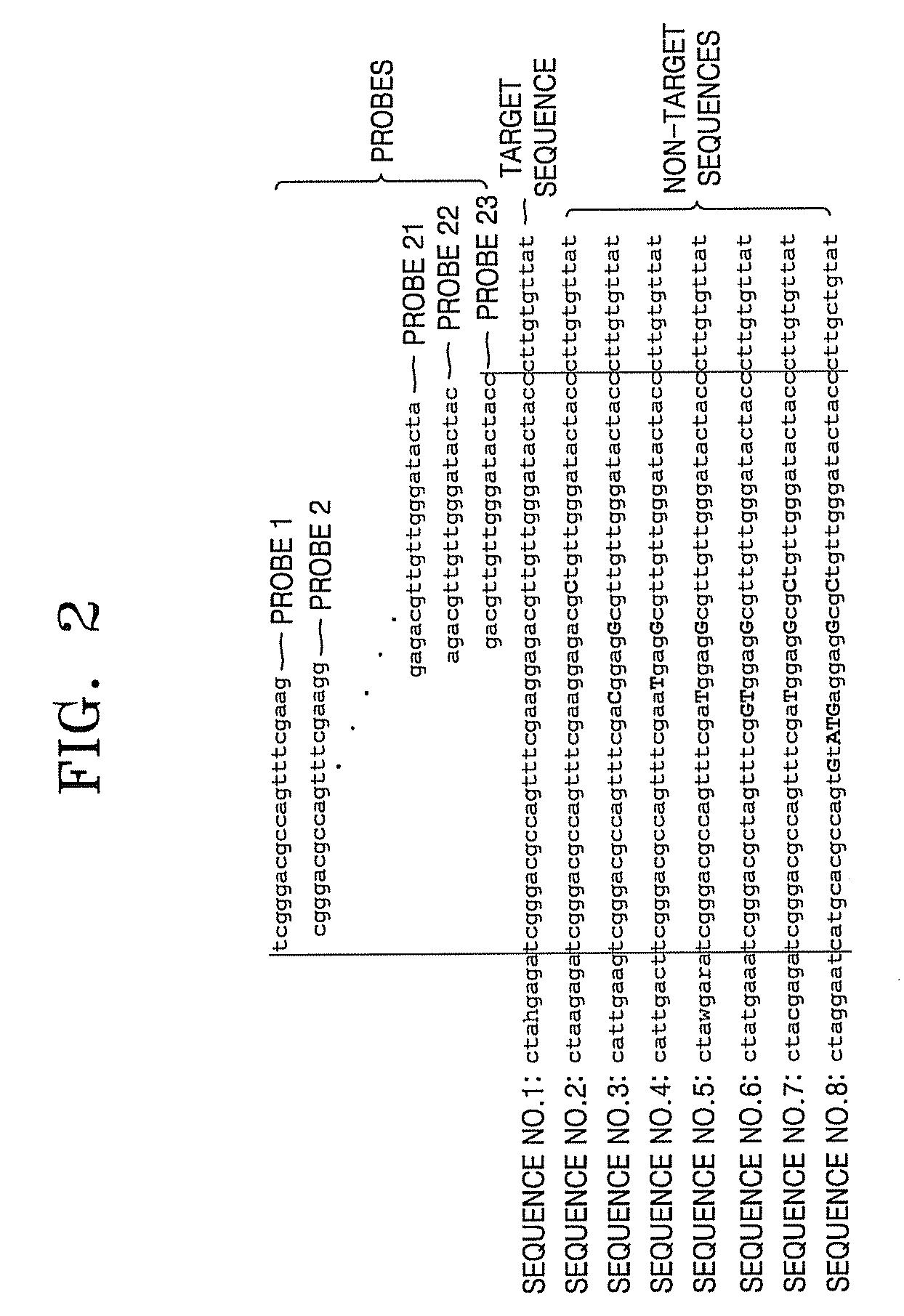Method of designing probes for detecting target sequence and method of detecting target sequence using the probes
a technology of target sequence and design method, which is applied in the field of designing probes for detecting target sequences and detecting target sequences using the probes, can solve the problems of difficult design of specific probes, limited to the identification of ten or fewer species of bacteria in a given sample, and high cost of manufacturing of microarrays of probes designed using this method, so as to achieve rapid and accurate detection of the presence of target sequences
- Summary
- Abstract
- Description
- Claims
- Application Information
AI Technical Summary
Benefits of technology
Problems solved by technology
Method used
Image
Examples
example 1
Designing Probes for Detecting a Target Sequence According to the Present Invention
[0086]As illustrated in FIG. 6, 4 complete matched probes and 4 intended mismatched probes (SEQ ID NOs: 9 through 16) which can specifically detect a target sequence (SEQ ID NO: 1), a region of the 23S rRNA of Streptococcus oralis (sor), from non-target sequences (SEQ ID NOs: 2 through 8) were designed.
[0087]Sequences with SEQ ID NOs: 2 through 8 are corresponding regions of 23S-rRNA in Streptococcus pneumoniae (spn), Streptococcus dysgalactia (sgo), Streptococcus pyogenes (sdy), Streptococcus sanguinis (spo), Streptococcus bovis (ssu), Streptococcus Gordonii (sbo), and Gemella melitensis (gme). Each of these microorganisms is a species having similar sequences to the target sequence region (sequence no. 1) and to each other in the corresponding region of 23S rRNA, with SEQ ID NOs: 2-8) showing 1 bp or 2 bp variations from the target sequence (SEQ ID NO:1).
experimental example 1
Detecting the Target Sequence
[0089]Experimental Example 1 illustrates the difference between a conventional method and the method of using probes according to the present invention in detecting the target DNA in samples comprising the target DNA and DNAs having similar sequences to the target DNA. In the conventional method, one probe represented as the target sequence (SEQ ID NO: 1) is used. However, when samples comprising DNAs having similar sequences to each other are mixed, the presence of the target sequence cannot be accurately determined using a single probe.
[0090]The FIG. 6 probes (SEQ ID NO: 9 through 16) designed according to the present invention and the conventional probe (SEQ ID NO: 17) were used to confirm whether the target sequence can be specifically detected and the results were compared.
[0091]The experiment is performed by using the conventional method and the method of the present invention with respect to each of the following 16 samples:
Single DNA Samples:
[009...
PUM
| Property | Measurement | Unit |
|---|---|---|
| length | aaaaa | aaaaa |
| frequency | aaaaa | aaaaa |
| length | aaaaa | aaaaa |
Abstract
Description
Claims
Application Information
 Login to view more
Login to view more - R&D Engineer
- R&D Manager
- IP Professional
- Industry Leading Data Capabilities
- Powerful AI technology
- Patent DNA Extraction
Browse by: Latest US Patents, China's latest patents, Technical Efficacy Thesaurus, Application Domain, Technology Topic.
© 2024 PatSnap. All rights reserved.Legal|Privacy policy|Modern Slavery Act Transparency Statement|Sitemap



